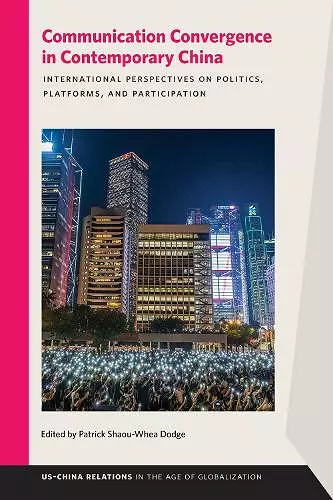Communication Convergence in Contemporary China
International Perspectives on Politics, Platforms, and Participation
Patrick Shaou-Whea Dodge editor
Format:Paperback
Publisher:Michigan State University Press
Published:1st Nov '20
Should be back in stock very soon

In a speech opening the nineteenth Chinese Communist Party Congress meeting in October 2017, President Xi Jinping spoke of a “New Era” characterized by new types of communication convergence between the government, Party, and state media. His speech signaled that the role of the media is now more important than ever in cultivating the Party’s image at home and disseminating it abroad. Indeed, communication technologies, people, and platforms are converging in new ways around the world, not just in China. This process raises important questions about information flows, control, and regulation that directly affect the future of US–China relations. Just a year before Xi proclaimed the New Era, scholars had convened in Beijing at a conference cohosted by the Communication University of China and the US-based National Communication Association to address these questions. How do China and the United States envision each other, and how do our interlinked imaginaries create both opportunities for and obstacles to greater understanding and strengthened relations? Would the convergence of new media technologies, Party control, and emerging notions of netizenship in China lead to a new age of opening and reform, greater Party domination, or perhaps some new and intriguing combination of repression and freedom? Communication Convergence in Contemporary China presents international perspectives on US–China relations in this New Era with case studies that offer readers informative snapshots of how these relations are changing on the ground, in the lived realities of our daily communication habits.
“Media convergence is well-known as a concept, but as a historical process, it is complicated by changing social contexts. This volume studies
media convergence in China while making sensitive comparisons with the United States. The result is an engaging comparative study that illuminates the concrete processes of media convergence and fragmentation in both countries. This is an important contribution to the study of global communication as well as media politics in China.”
—GUOBIN YANG, Grace Lee Boggs Professor of Communication and Sociology, Annenberg School for Communication, University of Pennsylvania
ISBN: 9781611863765
Dimensions: unknown
Weight: unknown
299 pages